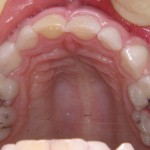
The traditional approach to the management of caries has focused on the complete mechanical removal of caries. However, there is increasing evidence to support biological approaches such as selective and stepwise caries removal particularly in permanent teeth but increasingly in primary teeth.
The aim of this review was to compare the efficacy of three caries removal methods, complete caries removal (CCR), selective caries removal (SCR), and stepwise caries removal (SWR) in primary teeth.
Methods
Searches were conducted in the PubMed/Medline, Cochrane library Embase, Clinical trials.gov and the World Health Organization International Clinical Trials Registry Platform databases with no restriction on date. Randomised controlled trials (RCTs) comparing SCR or SWR with CCR were considered. Three reviewers independently selected studies and assessed risk of bias using the Cochrane domains-based approach with two reviewers performing the data abstraction. Meta-analyses for intention-to-treat and per-protocol scenarios were performed using Revman5.
Results
- 10 papers reporting 8 studies (699 patients, 824 teeth) were included.
- 5 compared SCR v CCR, one SCR v SWR, one SWR v CCR and one all three techniques.
- The studies were published in Brazil, Germany, Scandinavia, Thailand and Turkey.
- Follow-up times ranged from 4-6 weeks to 2 years.
- 3 studies were considered to be at low risk of bias, 4 at unclear risk and 1 at high risk.
- Pooled results showed decreased risk of pulp exposure after SCR, OR= 0.10 (95%CI;0.04 – 0.25) or SWR, OR =0.20 (95%CI; 0.09 – 0.44) compared with CCR.
- There was a higher risk of composite restorative failure, OR= 2.61 (95%CI; 1.05 -6.49) using USPHS criteria, after SCR compared with CCR only in intention-to-treat analysis.
- Risk of clinical or radiographic failure of pulpo-periodontal complications was unchanged when compared with SCR and CCR or SWR.
Conclusions
The authors concluded: –
it is not possible to extend recommendations concerning caries removal strategies from permanent to primary teeth because only the risk of pulp exposure was significantly reduced with SCR and SWR compared with CCR. Further RCTs with higher power are still needed to demonstrate conclusively the routine suitability of SCR which is already recommended in the permanent teeth.
Comments
This review identified 8 RCTs as well as 3 ongoing trials addressing this topic providing only a limited amount of data to assess whether the newer biological approaches had better outcomes. The findings suggest that both SCR and SWR approach reduced pulpal complications but with a potential higher risk of restoration failure.
It is interesting to compare the findings of this review with the recently published FiCTION trial( Dental Elf – 6th Jan 2020 ; 20th Feb), a large UK primary care-based study which found no clinical differences between prevention alone, CCR or SCR with the use of a Hall crown but finding SCR and Hall crown to be the most cost-effective.
Links
Primary Paper
Aïem E, Joseph C, Garcia A, Smaïl-Faugeron V, Muller-Bolla M. Caries removal strategies for deep carious lesions in primary teeth: Systematic review [published online ahead of print, 2020 Jan 14]. Int J Paediatr Dent. 2020;10.1111/ipd.12616. doi:10.1111/ipd.12616
Other references
Dental Elf – 6th Jan 2020
Dental Elf – 20th Feb 2020
FiCTION Trial: the cost effectiveness of dental caries management in primary teeth
Dental Elf – 11th Apr 2013
